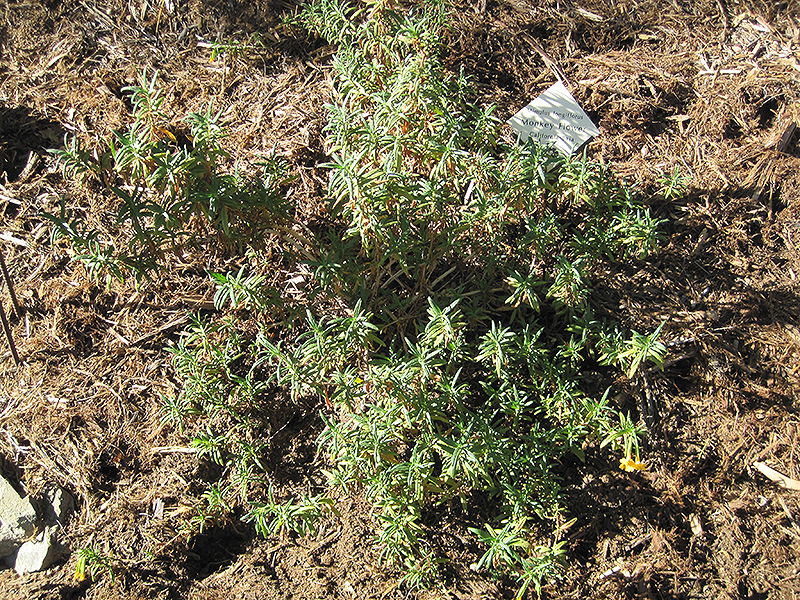Southern Bush Monkey Flower
Description
A native Californian beauty that will have the hummingbirds and butterflies fighting each other over the nectar of its yellow trumpet flowers; this small shrub thrives on neglect and requires sandy soil that is well-drained; best without fertilizer
Landscape Attributes
Southern Bush Monkey Flower is a multi-stemmed perennial with an upright spreading habit of growth. Its relatively fine texture sets it apart from other garden plants with less refined foliage.
Southern Bush Monkey Flower is recommended for the following landscape applications;
Planting & Growing
Southern Bush Monkey Flower will grow to be about 5 feet tall at maturity, with a spread of 5 feet. Its foliage tends to remain dense right to the ground, not requiring facer plants in front. Although it is technically a woody plant, this plant can be expected to behave as a perennial in our climate if planted outdoors over the winter, usually regrowing from its base (crown) the following year. As such, gardeners should take into consideration that it will perform differently than it would in its native habitat.
This plant does best in full sun to partial shade. It is very adaptable to both dry and moist growing conditions, but will not tolerate any standing water. It is considered to be drought-tolerant, and thus makes an ideal choice for a low-water garden or xeriscape application. It is not particular as to soil pH, but grows best in sandy soils. It is somewhat tolerant of urban pollution. This species is native to parts of North America. It can be propagated by division.
Southern Bush Monkey Flower is a fine choice for the garden, but it is also a good selection for planting in outdoor pots and containers. With its upright habit of growth, it is best suited for use as a 'thriller' in the 'spiller-thriller-filler' container combination; plant it near the center of the pot, surrounded by smaller plants and those that spill over the edges. It is even sizeable enough that it can be grown alone in a suitable container. Note that when growing plants in outdoor containers and baskets, they may require more frequent waterings than they would in the yard or garden. Be aware that in our climate, this plant may be too tender to survive the winter if left outdoors in a container. Contact our experts for more information on how to protect it over the winter months.

